Hi-Tech Engines
The engines on the boat are the new in-house produced Mercruiser 6.2L (377 Cu. in.) 350 HP engines. They were introduced a few years after the smaller cousins (4.5L) of in-house produced series came out. Previously, and for decades, the sterndrive engines were General Motors base engines with the marine systems and drive units added. Rather than using a GM engine, these engines were designed and made by Mercury.
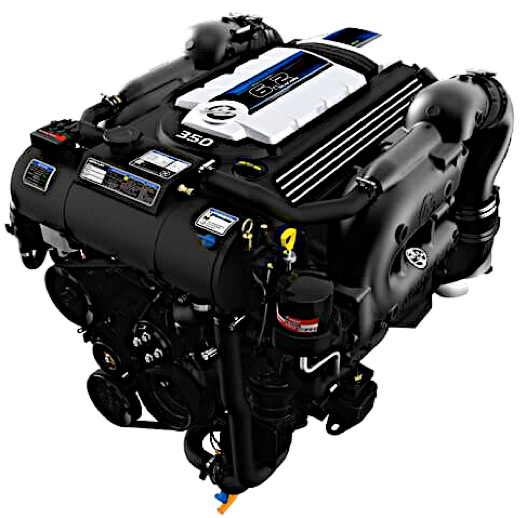
In searching for a boat, I was happy to be staying with Mercury (Mercruiser) engines as my previous boats were Mercruiser. Only one of the candidate boats that we considered had Volvo-Penta, which would have been a bit of a learning curve for me. Interestingly, Volvo-Penta has stayed with GM base engines vs. Mercury’s in-house approach.
My previous boat, the Formula 330, had the first generation of fuel injected engines, using the MEFI-1 controllers. These engines, being 20 years newer, were several generations of techno-evolution more advanced and used a PCM-112 engine controller. The main difference from a consumer standpoint is that a lot more of the engine functions are monitored/controlled by the engine’s computer (PCM), which can be a good thing . . . or not. One thing I learned from my previous set of computer controlled engines is that you need a computer to diagnose any issues. Traditional methods of engine trouble-shooting don’t work very well, and you can end up spending needless amounts of money replacing parts (aka the ‘parts cannon’).
The engines also had Digital Throttle & Steering (DTS) as well as Axius Joystick control. All fancy gadgets that replace traditional cables and linkages. The term ‘drive by wire’ is also associated with electronic controls. The engines also have the Catalytic Converter (CAT) exhaust, which makes the exhaust system much more expensive than the previous generations of sterndrive engines. Fortunately, the engines were also the SEACORE version and had FULL closed cooling systems, rather than raw water cooling, which makes them much more suitable for ocean use. Other stuff like stainless steel engine mounts were part of the SeaCore option, which I also liked.
Anyway, the engines were in decent shape, fairly low hours and maintained by the marina. They had good compression and reached their specified RPM during the sea trial. One issue noticed during the survey is that there was a low voltage warning on the starboard engine. I figured that to be a minor issue. During my pre-season prep work, the low voltage warning actually went away.
One thing I learned is that the engine controllers are very sensitive to voltage fluctuations and can give warnings regarding such (see the plethora of warning images below).
Here are some pictures of the engine bay, control levers, and the ‘world supply’ of batteries.
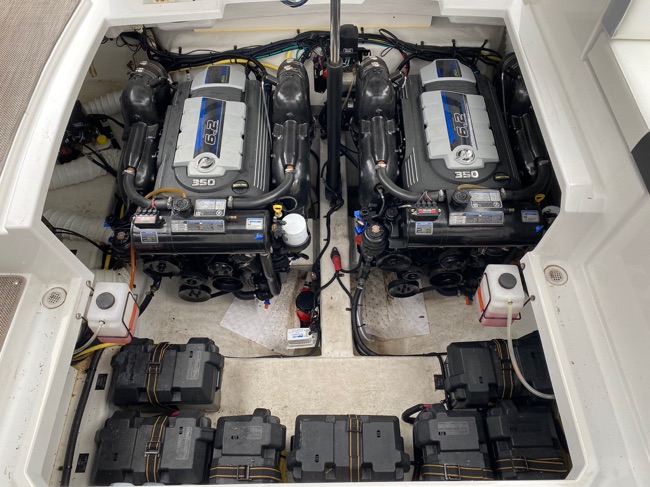
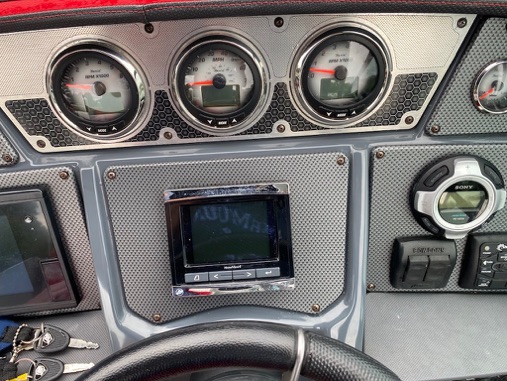

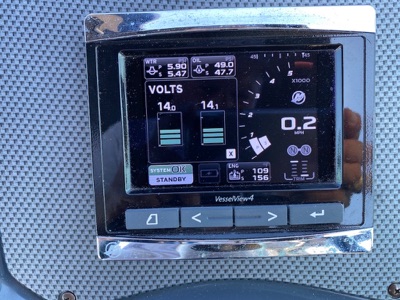


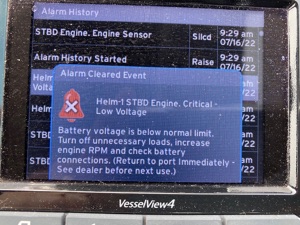

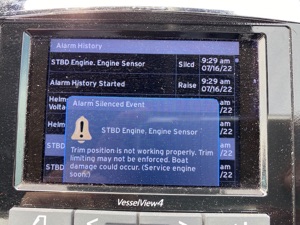
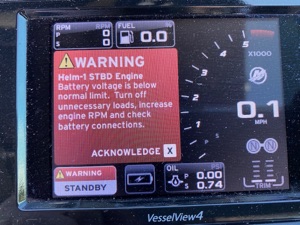
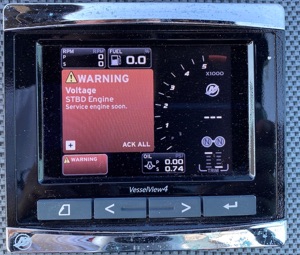
Sad & Sometimes Angry Engines
Happy Engines
There is a conveniently located connector at the helm for the computer diagnostics. I used the computer (Windows 10 and Rinda Diacom software) to diagnose the voltage issue. It seemed that there were 2 sources of voltage to the control system and the PCM did not like them being different by a certain amount (see all the various warning messages below, left). It turned out that the ‘Accessory’ battery was sitting at a lower voltage than the engine battery. This made the controller very unhappy and sometimes angry.
Once I tied the Accessory battery to the bank of 4 inverter batteries, the engine controller became ‘happy‘ again.
Overall, I like the engines, but still miss the 454 big-blocks I had in my Formula. The things I like about the new engines and related systems are . . .
-
 Raw water intake pressure reading . . . so you know if you are getting cooling water in from the ocean and can see if anything changes from normal levels.
Raw water intake pressure reading . . . so you know if you are getting cooling water in from the ocean and can see if anything changes from normal levels.
-
 Joystick control for ‘crabbing’ the boat sideways. I can do most other maneuvers with the dual throttle/shifts, as was the case with my old boat. I found that many times the boat wants to go backwards when using the joystick. I think there is an issue with the port outdrive, causing a delayed shift.
Joystick control for ‘crabbing’ the boat sideways. I can do most other maneuvers with the dual throttle/shifts, as was the case with my old boat. I found that many times the boat wants to go backwards when using the joystick. I think there is an issue with the port outdrive, causing a delayed shift.
